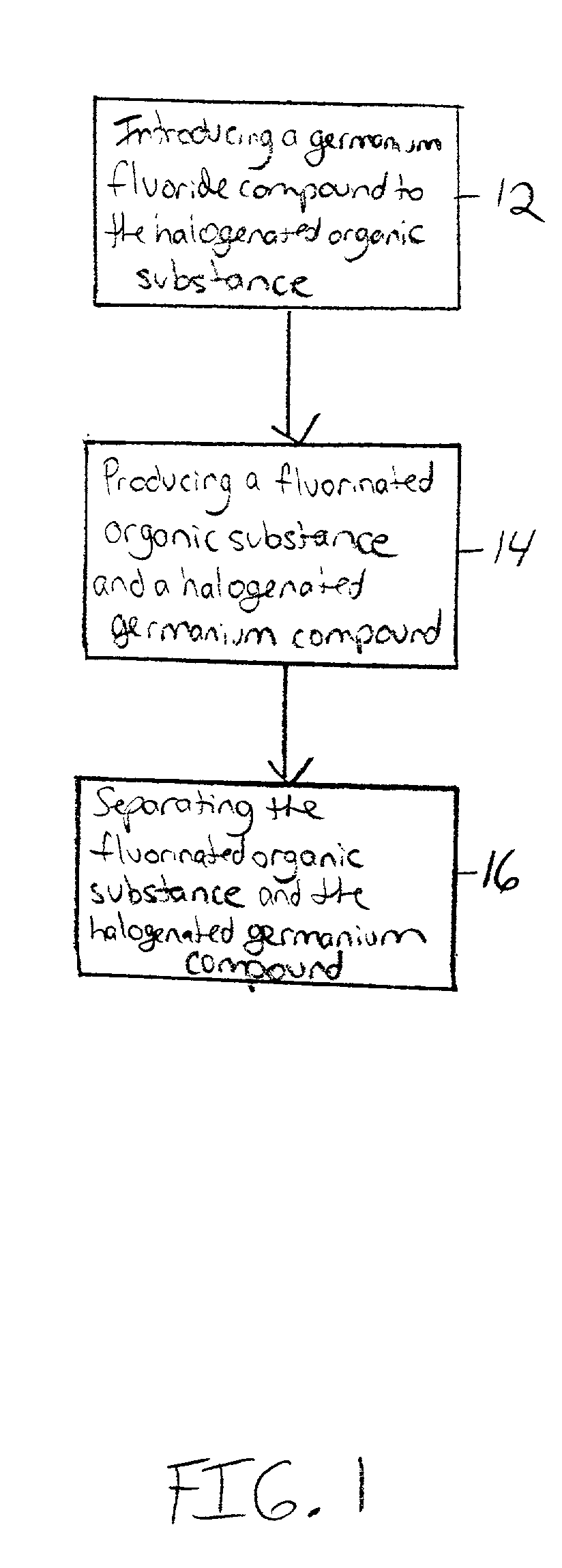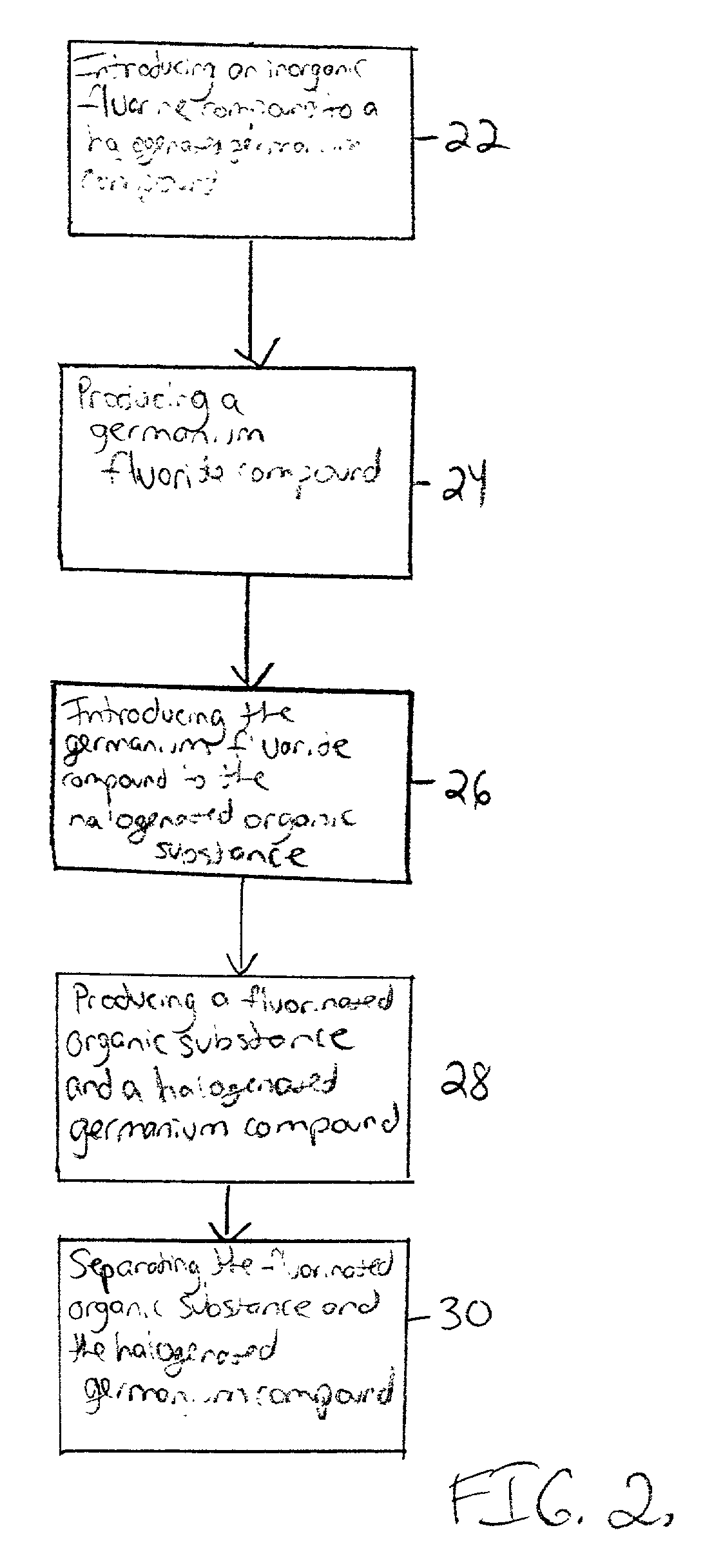Method of fluorinating a halogenated organic substance
a technology of organic compounds and fluorinated compounds, which is applied in the field of fluorination of halogenated organic compounds, can solve the problems of reducing the application range of halogenated hydrocarbons, affecting the production efficiency of halogenated hydrocarbons, and presenting significant obstacles to the use of reagents in many practical applications
- Summary
- Abstract
- Description
- Claims
- Application Information
AI Technical Summary
Benefits of technology
Problems solved by technology
Method used
Image
Examples
Embodiment Construction
[0023] A germanium fluoride compound is reacted with a halogenated organic substance to increase the fluorine content of the halogenated organic substance, FIG. 1. First, the halogenated organic substance to be fluorinated is chosen. The germanium fluoride compound is then introduced to the halogenated organic substance 12. This mixture is preferably then subjected to temperatures in the range of 250-320.degree. C., and more preferably between 275.degree. and 320.degree. C. Such temperatures are high enough to promote reactions without destroying the organic substance. The reaction of the germanium fluoride compound and the halogenated organic substance produces a fluorinated organic substance and a halogenated germanium compound 14. The fluorinated organic substance is then separated from the halogenated germanium compound 16, for example by gas separation or by washing.
[0024] The combination of the germanium fluoride compound and the halogenated organic substance can also occur in...
PUM
| Property | Measurement | Unit |
|---|---|---|
| temperature | aaaaa | aaaaa |
| temperature | aaaaa | aaaaa |
| temperatures | aaaaa | aaaaa |
Abstract
Description
Claims
Application Information
 Login to View More
Login to View More - R&D
- Intellectual Property
- Life Sciences
- Materials
- Tech Scout
- Unparalleled Data Quality
- Higher Quality Content
- 60% Fewer Hallucinations
Browse by: Latest US Patents, China's latest patents, Technical Efficacy Thesaurus, Application Domain, Technology Topic, Popular Technical Reports.
© 2025 PatSnap. All rights reserved.Legal|Privacy policy|Modern Slavery Act Transparency Statement|Sitemap|About US| Contact US: help@patsnap.com


